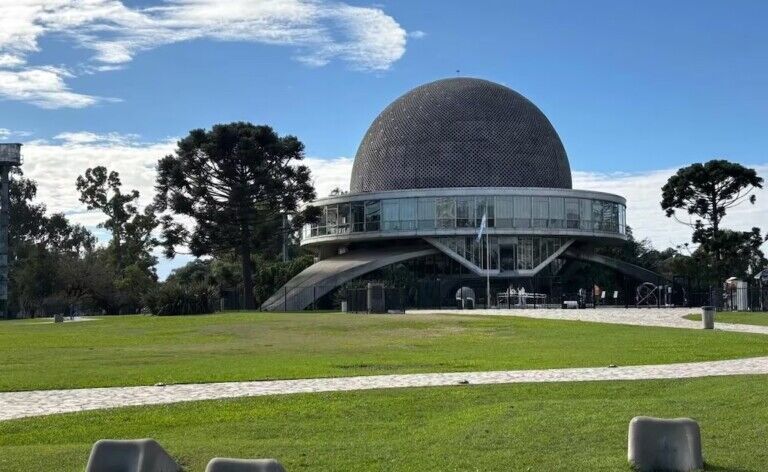Barco, a technology company specialising in innovative visualisation solutions, recently partnered with the Galileo Galilei Planetarium in Buenos Aires, Argentina, to support a significant technological upgrade that enhanced both its indoor and outdoor projection systems.
Situated in the Palermo district, the Galileo Galilei Planetarium has long been a gateway to the stars. Famous for its distinctive UFO-shaped dome and engaging educational exhibits, it is a popular spot for both residents and visitors.
Since its 1968 opening, the Galileo Planetarium has symbolised Argentina’s commitment to science, education, and architecture. Designed by Enrique Jan, it’s one of the few buildings based on equilateral triangle geometry, symbolising unity. Located in Parque Tres de Febrero, it has hosted visitors exploring the cosmos through exhibits, shows, and dome projections.
Over the years, the planetarium has evolved from mechanical to digital projection systems, continually striving to offer cutting-edge experiences. In 2025, it underwent its biggest upgrade: a complete projection overhaul inside and outside the dome.
Two key projects
The planetarium’s upgrade included two key projection projects, formerly handled by rival brands, each with unique technical and creative needs.
The team aimed to revitalise the building’s exterior projection mapping, replacing the outdated system that was hard to maintain and no longer met visual standards. The goal was a modern, reliable solution for vivid, high-impact visuals with minimal outdoor maintenance.
The second project focused on the interior dome, where visitors experience immersive astronomical shows. The existing projection system lacked the brightness and colour accuracy to fully engage audiences in the 20-meter dome. The planetarium team sought a solution to enhance image quality, minimise recalibration requirements, and support diverse educational content with long-term stability.
To realise both initiatives, the Galileo Planetarium chose Barco projection systems due to their performance, reliability, and ease of integration.
The team installed two QDX-W35 projectors for outdoor projection mapping, selected for their high brightness and capacity to deliver sharp, vivid visuals on the curved façade. Designed with external cooling and durability in mind, these compact projectors reduced maintenance costs, increased efficiency, and strengthened the visual impact of the nightly light shows.
Inside the 20-meter dome, the team upgraded to six I600-4K10 projectors. The I600’s 4K resolution and laser phosphor provided clearer, more consistent images for immersive educational presentations. The planetarium team appreciated the I600’s ability to maintain calibration over time, reducing technical issues and ensuring consistent shows.
Quality and reliability
Barco’s reputation for quality, support, and intuitive tools made the transition smooth and ensured a future-proof outcome. The planetarium now has a projection system that meets current standards and is built to last.
“We were looking for projection technology that could match the ambition of our programming – something bright, reliable, and built to last,” says Claudio Screta, technology leader at Galileo Galilei Planetarium.
“With Barco, we found exactly that. The new systems have transformed both our dome shows and our outdoor displays, and the support we received throughout the process made all the difference.”
The outdoor projection mapping now delivers vibrant, high-resolution visuals that light up the Buenos Aires night, highlighting the planetarium’s iconic architecture and boosting its role as a cultural landmark. Inside, the dome projection system elevates the visitor experience. Shows are brighter, more colourful, and immersive than ever.
Last month, Barco shared the results of its worldwide survey to enhance understanding of the evolving museum technology space.
